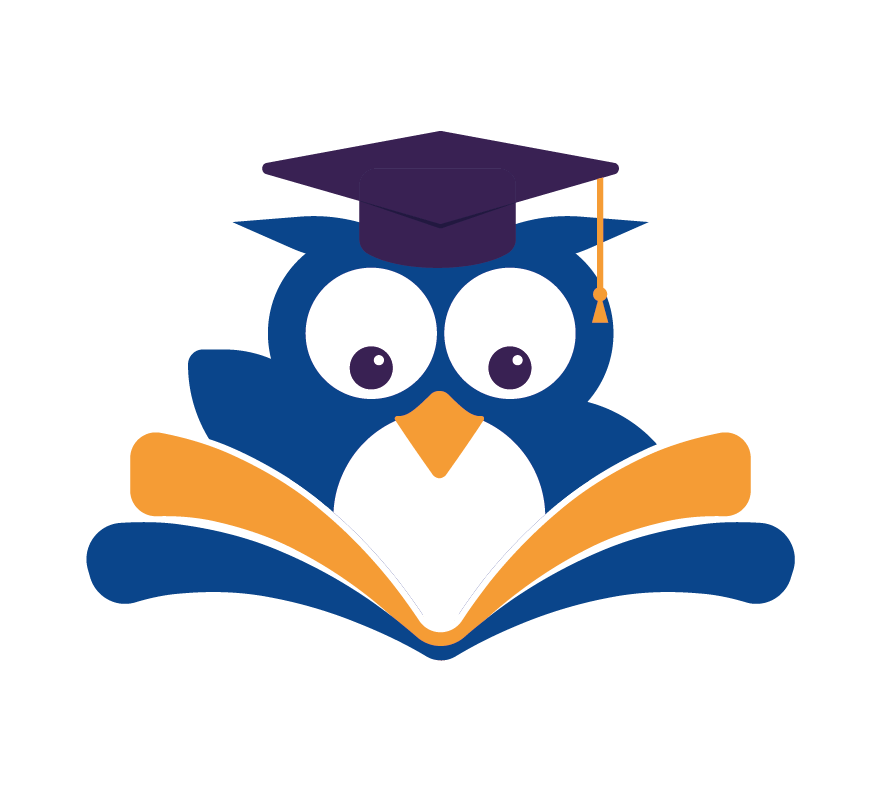Becoming an unstoppable learner means knowing how to learn well. H.L. Roediger says, “if you want to be a contender, it’s mastering the ability to learn that will get you in the game and keep you there.”
Learning well is great for growing personally and professionally. By learning effectively, you can get better at what you do. We think that continuous improvement is essential for success.
By embracing lifelong learning, you can handle new challenges and chances. It’s about being ready for new things and using them to improve your skills.
Key Takeaways
- Mastering the ability to learn is crucial for personal and professional growth.
- Effective learning principles can be applied to various areas of life.
- Continuous improvement is key to achieving success.
- Lifelong learning enables adaptation to new challenges and opportunities.
- Embracing new experiences and knowledge enhances your skills.
The Psychology Behind Becoming an Unstoppable Learner
To reach your full learning potential, understanding the psychological aspects is key. A growth mindset is essential. This mindset, coined by Carol Dweck, believes that skills can grow with effort and dedication.
Embracing the Growth Mindset
Adopting a growth mindset is crucial for unstoppable learning. It means seeing your abilities as changeable, not fixed.
Fixed vs. Growth Mindset Comparison
Let’s look at the fixed and growth mindsets:
| Aspect | Fixed Mindset | Growth Mindset |
|---|---|---|
| View of Intelligence | Believe intelligence is static | Believe intelligence can be developed |
| Response to Challenges | Avoid challenges | Embrace challenges |
| Feedback | Take feedback personally | Use feedback for improvement |
Reframing Challenges as Opportunities
With a growth mindset, you see challenges as chances for self-development and personal growth. This view helps you face obstacles with strength and resolve.
The Neuroscience of Effective Learning
Knowing how our brains learn is vital. Neuroscience shows our brains can change based on what we experience, a concept called neuroplasticity.
Developing Learning Resilience
Building resilience is crucial for bouncing back from setbacks. It means having a positive outlook, setting achievable goals, and taking care of yourself.
By applying these psychological principles, you’ll be ready to tackle challenges and reach your goals. This makes you an unstoppable learner.
Discover Your Personal Learning Style
Unlocking your full potential as a learner starts with understanding how you learn best. Jim Kwik, a renowned expert in speed reading and memory improvement, says knowing your learning style is key for effective learning.
Visual, Auditory, and Kinesthetic Learning Preferences
Most people have a dominant learning style. This can be visual, auditory, or kinesthetic. Visual learners get information best through images and visual aids. Auditory learners learn by listening. Kinesthetic learners prefer hands-on experiences to understand new concepts.
Multiple Intelligence Theory in Practice
The Multiple Intelligence Theory, by Howard Gardner, says we have different types of intelligence. These include linguistic, logical-mathematical, and spatial intelligence. Knowing your strengths in these areas can help tailor your learning approach.
Creating Your Optimal Learning Environment
Your learning environment is crucial for your educational journey. Optimizing both your physical and digital spaces can enhance your skill acquisition.
Physical Space Optimization
To create an effective physical learning space, consider lighting, noise levels, and comfort. A clutter-free and organized workspace helps you stay focused.
Digital Environment Setup
For your digital learning environment, ensure your devices are organized. Have the necessary tools and software for your learning needs. Minimizing digital distractions is key to maintaining productivity.
By understanding your personal learning style and creating an optimal learning environment, you can significantly boost your learning efficiency. This makes your educational journey more enjoyable and effective.
Evidence-Based Learning Techniques
To become an unstoppable learner, you need to use proven techniques. These methods help you learn better and remember more. By applying these strategies, you can improve how you absorb and keep new information.
Spaced Repetition Systems
Spaced repetition helps solidify information in your memory. It involves reviewing material at longer intervals. This method works well for learning new words, dates, or facts.
Creating Effective Flashcard Systems
Flashcards are a common tool for spaced repetition. Write a question or term on one side and the answer on the other. Use a spaced repetition algorithm to decide when to review each card again.
Optimal Review Schedules
The right review schedule is key for spaced repetition. Research shows reviewing material just before forgetting it is best. Use software or apps to automate this process and review at the right times.
The Feynman Technique for Deep Understanding
The Feynman Technique helps you understand complex ideas. Break down complex concepts into simple explanations. Explain them as if teaching someone else, then review and simplify your explanation.
Chunking and Information Hierarchy
Chunking breaks down complex information into smaller parts. This reduces cognitive overload and makes learning easier. Organizing information in a hierarchy helps understand relationships between different pieces.
| Technique | Description | Benefits |
|---|---|---|
| Spaced Repetition | Review material at increasingly longer intervals | Improved long-term retention, efficient use of study time |
| Feynman Technique | Explain complex concepts in simple terms | Deeper understanding, improved ability to apply knowledge |
| Chunking | Break down complex information into smaller chunks | Reduced cognitive overload, improved organization |
Active Recall vs. Passive Review
Active recall strengthens your memory by actively recalling information. Techniques like quizzing or summarizing in your own words are effective. Passive methods like re-reading or watching videos without engagement are less effective.
By using these evidence-based techniques, you can improve your learning. This will help you reach your goals more efficiently.
Strategic Time Management for Learning
Effective time management is key to successful learning. It helps you reach your goals without feeling overwhelmed. As learners, we often juggle study time with other duties. It’s important to find ways to make our study time count.
Creating a Sustainable Study Schedule
To begin, make a study schedule that fits your life. Know your daily routine and when you’re most productive. Set aside specific times for studying. Consistency is key; study at the same time each day to make it a habit.
The Pomodoro Technique for Focused Learning
The Pomodoro Technique is great for staying focused. Study in 25-minute blocks, then take a 5-minute break. After four blocks, take a 15-30 minute break. This method prevents burnout and keeps your focus sharp.
Interleaving Multiple Subjects
Interleaving means switching between different subjects to deepen your understanding. It makes studying more interesting and effective. For example, if you’re studying for several exams, switch subjects every hour.
Balancing Deep Work with Rest Periods
It’s important to balance intense study sessions with breaks. Deep work helps you make big strides, but too much without rest can lead to burnout. Use breaks to relax or do something not related to studying to recharge.
| Technique | Description | Benefits |
|---|---|---|
| Creating a Sustainable Study Schedule | Plan out your study sessions in advance, considering your daily routine and productivity peaks. | Helps in maintaining consistency and making studying a habit. |
| The Pomodoro Technique | Study in focused 25-minute increments, followed by a 5-minute break. | Enhances focus, reduces burnout, and improves productivity. |
| Interleaving Multiple Subjects | Switch between different subjects during study sessions. | Deepens understanding, improves application of knowledge, and makes study sessions more engaging. |
| Balancing Deep Work with Rest | Alternate between intense study sessions and rest periods. | Prevents burnout, maintains productivity, and supports overall well-being. |
By using these time management strategies, you can make your study sessions more effective. You’ll reach your learning goals faster and keep a healthy balance between studying and resting.
Digital Arsenal of the Unstoppable Learner
The right digital tools can change how we learn, making it better and faster. Today, learners have many tools to help them learn and get new skills.
Note-Taking Applications and Systems
Good note-taking is key to learning. There are many note-taking apps, each with special features.
Linear vs. Non-Linear Note-Taking
Linear note-taking is taking notes in order. Non-linear note-taking is more flexible, using mind maps. Non-linear note-taking is great for complex topics.
Building a Personal Knowledge Management System
A personal knowledge system organizes and links notes. Tools like Evernote or Roam Research help build this system.
Spaced Repetition Software Tools
Spaced repetition helps solidify learning. Tools like Anki use this method to keep information in our minds.
Online Learning Platforms and Communities
Online platforms offer lots of learning chances. Sites like Coursera and Udemy have courses on many subjects. Being part of online communities also boosts our learning.
AI-Assisted Learning Tools
AI tools are changing learning. They offer personalized learning paths and feedback. For example, AI-powered tutoring systems adjust to our learning speed.
Using these digital tools, we can make learning personal and fun. Whether it’s advanced note-taking or AI learning platforms, today’s tools are truly changing the game.
Building Unbreakable Learning Habits
Creating lasting learning habits is key to reaching your full potential. By setting up systems that keep you consistent, you can meet your learning goals.
Habit Stacking for Consistent Learning
Habit stacking means adding new habits to ones you already have. For instance, if you always drink coffee in the morning, you can start reviewing your learning plan right after.
Benefits of Habit Stacking:
- It makes starting new habits easier
- It helps you stick to new habits
- It builds a routine for learning every day
Creating Environmental Triggers
Environmental triggers are cues around you that tell you to do something. They help make your learning habits automatic and consistent.
Examples of Environmental Triggers:
- Keeping your learning stuff where you can see it
- Having a special place for learning
- Using a certain mug or pen for learning
| Habit Building Technique | Description | Benefits |
|---|---|---|
| Habit Stacking | Building new habits onto existing ones | Reduces cognitive load, increases stickiness |
| Environmental Triggers | Creating cues in your surroundings to prompt action | Automates habits, increases consistency |
| Tracking Progress | Monitoring your progress and celebrating milestones | Boosts motivation, provides feedback |

Tracking Progress and Celebrating Milestones
Keeping track of your progress and celebrating your achievements is vital. It keeps you motivated and focused on your learning goals. By watching your progress, you can see what needs work and change your plan.
Accountability Systems That Work
Having someone or something to hold you accountable can really help. This could be a learning partner, a mentor, or even an app for tracking habits.
By using these methods, you can create strong learning habits. These habits will help you keep growing and improving every day.
Leveraging Social Learning for Accelerated Growth
Using social learning can speed up your growth in many areas. It’s not just about being around people. It’s about connecting with a community that shares your interests and goals.
Finding Learning Partners and Mentors
Finding the right people to learn from is key. Look for those who love lifelong learning as much as you do. They can offer valuable advice and support.
Participating in Learning Communities
Being part of learning communities is a great way to grow. These can be online or offline. They let you share ideas, ask questions, and learn from others.
Teaching Others to Solidify Knowledge
Teaching others is a great way to make your knowledge stick. When you explain something to someone, you get to understand it better. You also see where you need to practice more.
Collaborative Learning Projects
Working on projects with others is very helpful. It lets you use your skills in real situations. This hands-on learning is great for improving your skills and solving problems.
In conclusion, social learning is a powerful way to improve your learning. By finding good learning partners, joining communities, teaching others, and working on projects, you can grow faster in your personal and professional life.
Measuring Progress and Overcoming Learning Plateaus
Starting your learning journey means tracking your progress is key. It helps you stay focused and reach your goals. Knowing how to track your growth and get past learning hurdles is essential.
Creating Effective Learning Metrics
To measure progress well, set clear goals and track your time. Use quizzes and tests to check your skills. These steps give you insights into your learning journey.
| Metric | Description | Example |
|---|---|---|
| Time Spent | Tracking the amount of time dedicated to learning | 2 hours per day |
| Skill Mastery | Assessing proficiency in specific skills | Completing a project using a new programming language |
| Progress Quizzes | Regular assessments to gauge understanding | Scoring 80% or higher on weekly quizzes |
Recognizing and Breaking Through Plateaus
Plateaus are normal, but spotting them is the first step to moving past them. Regularly check your progress and tweak your learning plan. This helps you keep moving forward.

Recovering from Learning Burnout
Burnout can stop your learning. Take a break, review your goals, and adjust your schedule. This allows you to recharge and keep learning.
Adjusting Strategies When Progress Stalls
If your progress slows, it’s time to change your approach. Look for new resources, join a study group, or try a different learning spot. Being adaptable helps you keep growing.
Conclusion: Your Continuous Journey as a Lifelong Learner
As we wrap up our look at becoming an unstoppable learner, it’s clear the journey never ends. Having a growth mindset and using effective learning methods are key to lasting success. These steps are essential for your educational journey.
By choosing to learn for life, you’ll be ready for the constant changes in personal and professional growth. Your journey ahead means staying true to your goals, facing challenges head-on, and grabbing opportunities when they come.
Remember, personal growth comes from hard work and dedication. The strategies and techniques we’ve discussed will help you keep growing. They empower you to make a real difference in your field.

